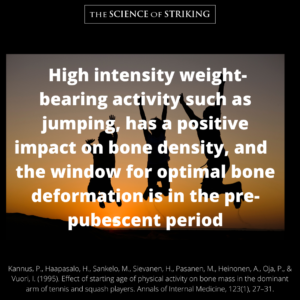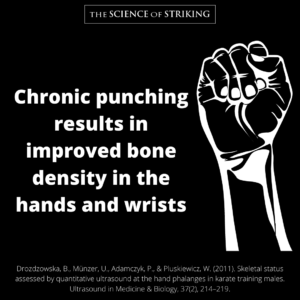Let another reason to encourage martial arts participation in children!
Bone density and bone strength is a critical component of musculoskeletal health, and becomes increasingly important as we age. We know that activity, and in particular high intensity weight-bearing activity such as jumping, has a positive impact on bone density, and that the window for optimal bone deformation is in the pre-pubescent period (Kannus et al., 1995). We also know that these changes can last for decades after the individual has ceased that particular activity (Warden et al., 2005).
Many of these activities, however, involve primarily loading of the lower limb. We know that from research by Drozdzowska et al that chronic punching results in improved bone density in the hands and wrists (Drozdzowska et al., 2011). The bony loading that occurs with full contact punching is the perfect stimulus to elicit upper limb bony adaptation in the critical period, setting children up for lifelong improvements in bone health!



